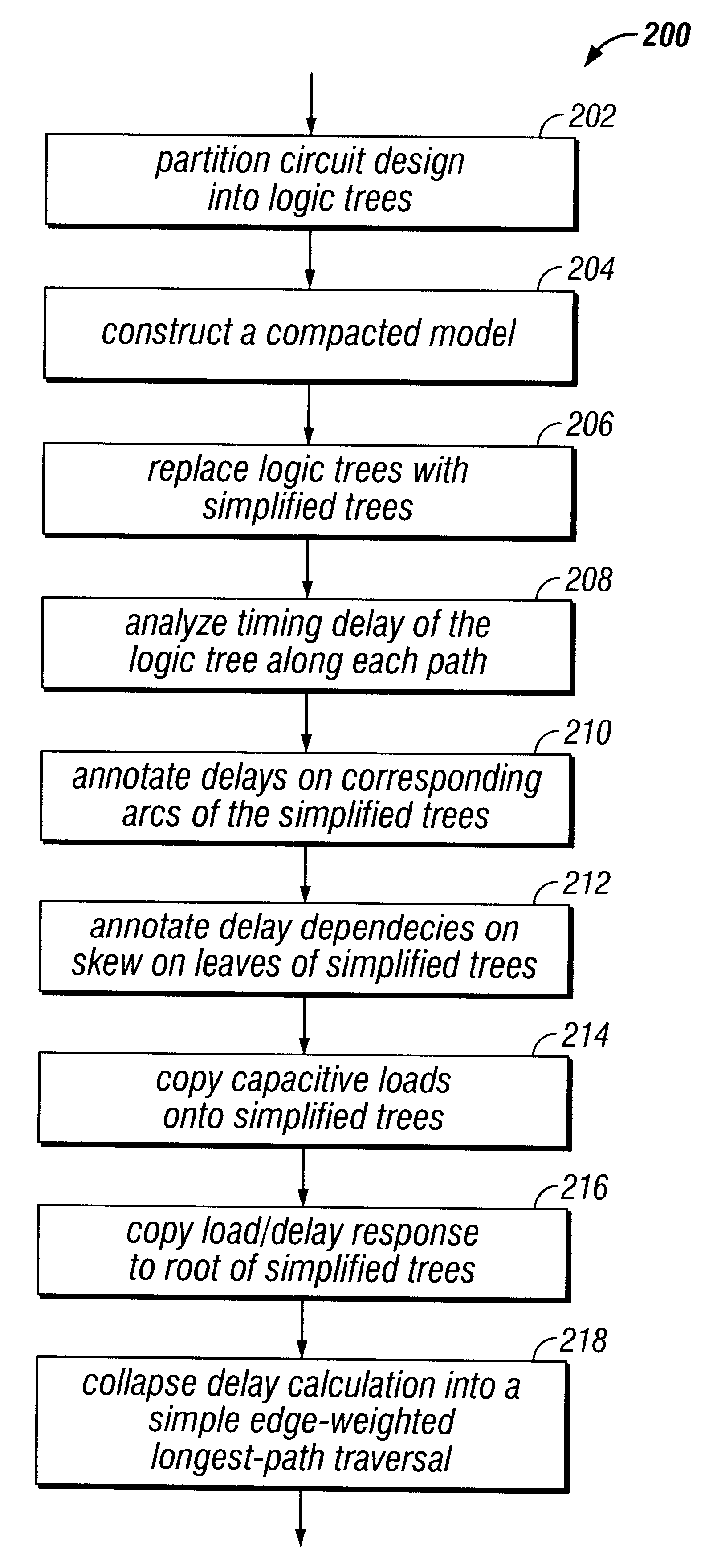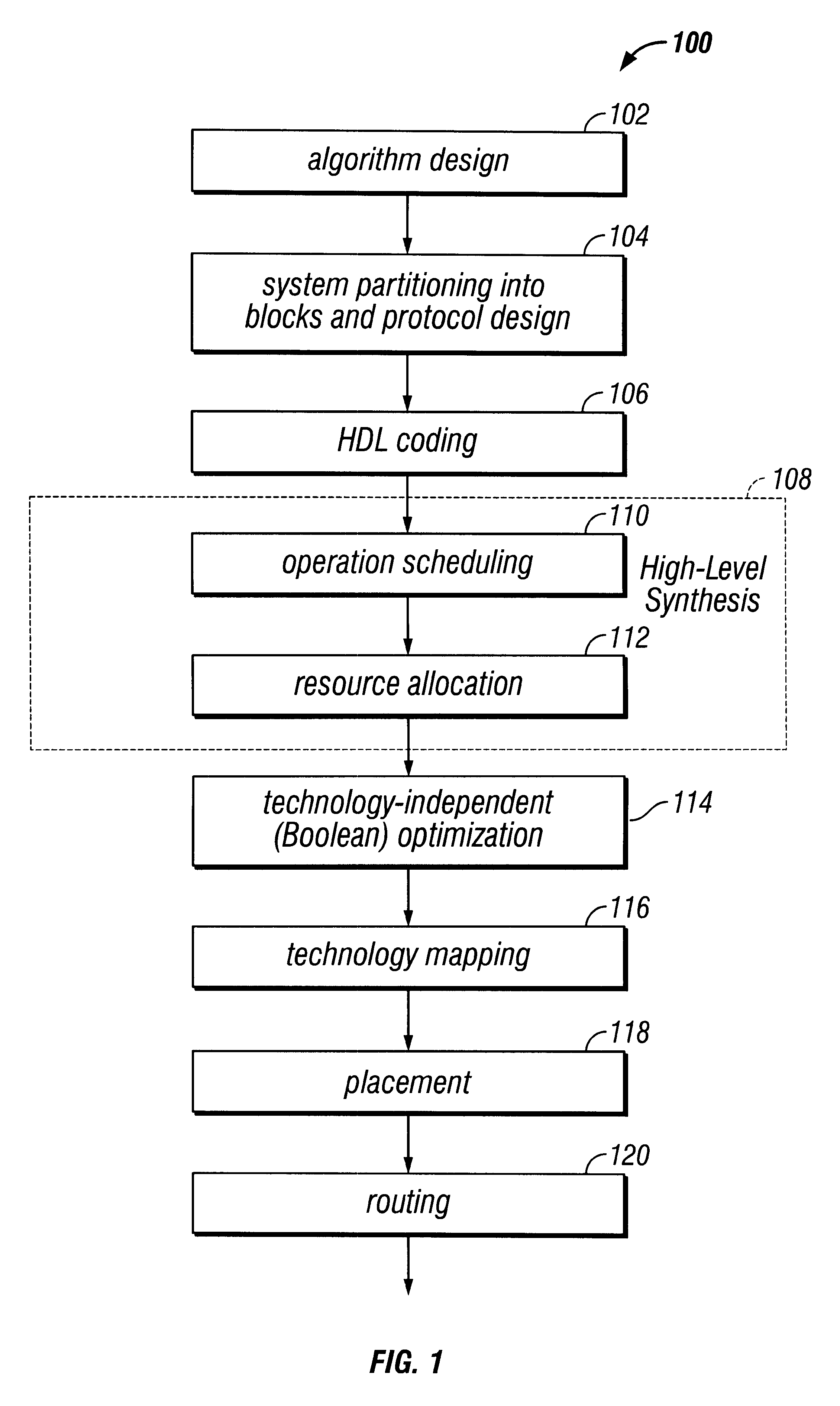Method for timing analysis during automatic scheduling of operations in the high-level synthesis of digital systems
a technology of automatic scheduling and digital systems, applied in the field of electronic design automation, can solve the problems of multiplexing cost, unable to move/rescheduled output operations, and upset the block-to-block communication protocol
- Summary
- Abstract
- Description
- Claims
- Application Information
AI Technical Summary
Benefits of technology
Problems solved by technology
Method used
Image
Examples
Embodiment Construction
FIG. 1 represents an electronic design automation (EDA) method embodiment of the present invention, and is referred to herein by the general reference numeral 100. The EDA method begins with an algorithm design step 102. The system design is partitioned into blocks and protocol design in a step 104. Verilog or other kind of hardware description language (HDL) coding is done in a step 106. A high-level synthesis (HLS) step 108 includes an operation scheduling step 110 and a resource allocation step 112. A timing analysis is applied each time an individual operation is scheduled, and may be called many times to get a single operation scheduled. A technology-independent (Boolean) optimization step 114 follows. A technology mapping step 116 maps the abstract Boolean gates of the circuit to standard cells from a technology library, for example. A placement step 118 locates the gates on the chip real estate, and a routing step 120 interconnects them with wires.
The timing analysis starts w...
PUM
 Login to View More
Login to View More Abstract
Description
Claims
Application Information
 Login to View More
Login to View More - R&D
- Intellectual Property
- Life Sciences
- Materials
- Tech Scout
- Unparalleled Data Quality
- Higher Quality Content
- 60% Fewer Hallucinations
Browse by: Latest US Patents, China's latest patents, Technical Efficacy Thesaurus, Application Domain, Technology Topic, Popular Technical Reports.
© 2025 PatSnap. All rights reserved.Legal|Privacy policy|Modern Slavery Act Transparency Statement|Sitemap|About US| Contact US: help@patsnap.com



